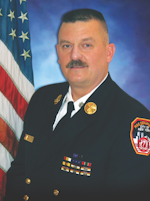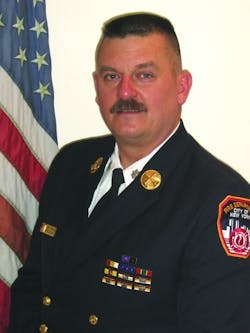We’ve all heard the warning that we shouldn’t use the words “always” and “never” too often. The reasoning: Using those words make a statement or condition too absolute, too restrictive. But let’s look at how using those words when discussing some aspects of the fire service can result in safer and more effective firefighting operations.
Always wear seatbelts
One of the most talked about issues in today’s fire service is the use of seatbelts while riding in our apparatus. I’m going to jump right in with the word always! Each and every one of us—firefighters, officers and chiefs—should be wearing our seatbelts every time we get on an apparatus. This means for emergency response, for returning from alarms and for traveling to an inspection site. It is absolutely amazing that a firefighter will happily don bunker gear and SCBA to protect themselves while fighting a fire, but resist wearing the seatbelt on the apparatus for the short trip to the scene.
Statistics don’t lie. Every one of us is dramatically safer when buckled up with a seatbelt than without one. I’ve been saying for years that only one person on the apparatus has to believe this, and it’s the officer. We really don’t need red flashing lights on the apparatus dashboard or sensors in the seats to detect if a firefighter is seated and not belted. We only need good officers in the front seat who won’t allow the rig to leave the bay until everyone is wearing their seatbelt. Always wear your seatbelt!
Always check the rig
Another “always” that is important to us all focuses on checking the apparatus, tools and equipment. Always check the apparatus on drill night or at the start of your shift. I cannot begin to guess the number of times during my 40 years in the fire service that I have participated in this important duty.
When I say check the rig, that includes the actual vehicle, including doors, lights steps, compartment latches, etc. Then it moves into the compartments. Every tool in every compartment must be examined. Don’t open the compartment door, look in and close it. Each tool must be examined. Hand tools need to be picked up, and power tools need to be started and run. Check fuel tanks to ensure that they are full and top off when needed.
If you think about how many tools and pieces of equipment you carry on your apparatus, you can see that this will probably take some time. Don’t rush! This may be some of the most vital work you will do all day. Even if you worked yesterday, check that rig again today. Always check the rig!
Never back up without a guide
This may not sound dramatic, but it is a lifesaving tactic: Never back up an apparatus without a firefighter physically guiding it back! This includes backing into the firehouse after a response, backing up a short distance to complete making a tight turn and, of course, backing up at the scene to better position the apparatus. There is no backing situation that is exempt from this rule.
Several years ago in upstate New York, an apparatus was parked at the curb and needed to back up a few feet to pull away from the curb. With the firefighters all on board, the driver backed up and accidently hit and killed a civilian who had crossed the street and was between the apparatus and the vehicle behind it.
One or two firefighters are killed every year when a backing apparatus strikes them. Sometimes it’s even the firefighter guiding the rig back who is struck. As such, the second part of this rule is that the driver must maintain visual contact with the guide or stop the rig and wait until they appear again in the mirror. Never back up without a guide!
Restrictive can be good
I’m sure you are thinking of several more situations and conditions where we should apply the “always” and “never” rule. Yes, both of those words are very restrictive, and they leave little room for debate. But if you look at the situations discussed in this article, and the others with which you may have had some experience, you can see that using “always” and “never” in some situations is the only way to go.

John J. Salka Jr. | Battalion Chief
JOHN J. SALKA JR., who is a Firehouse contributing editor, retired as a battalion chief with FDNY, serving as commander of the 18th battalion in the Bronx. Salka has instructed at several FDNY training programs, including the department’s Probationary Firefighters School, Captains Management Program and Battalion Chiefs Command Course. He conducts training programs at national and local conferences and has been recognized for his firefighter survival course, “Get Out Alive.” Salka co-authored the FDNY Engine Company Operations manual and wrote the book "First In, Last Out–Leadership Lessons From the New York Fire Department." He also operates Fire Command Training, which is a New York-based fire service training and consulting firm.






